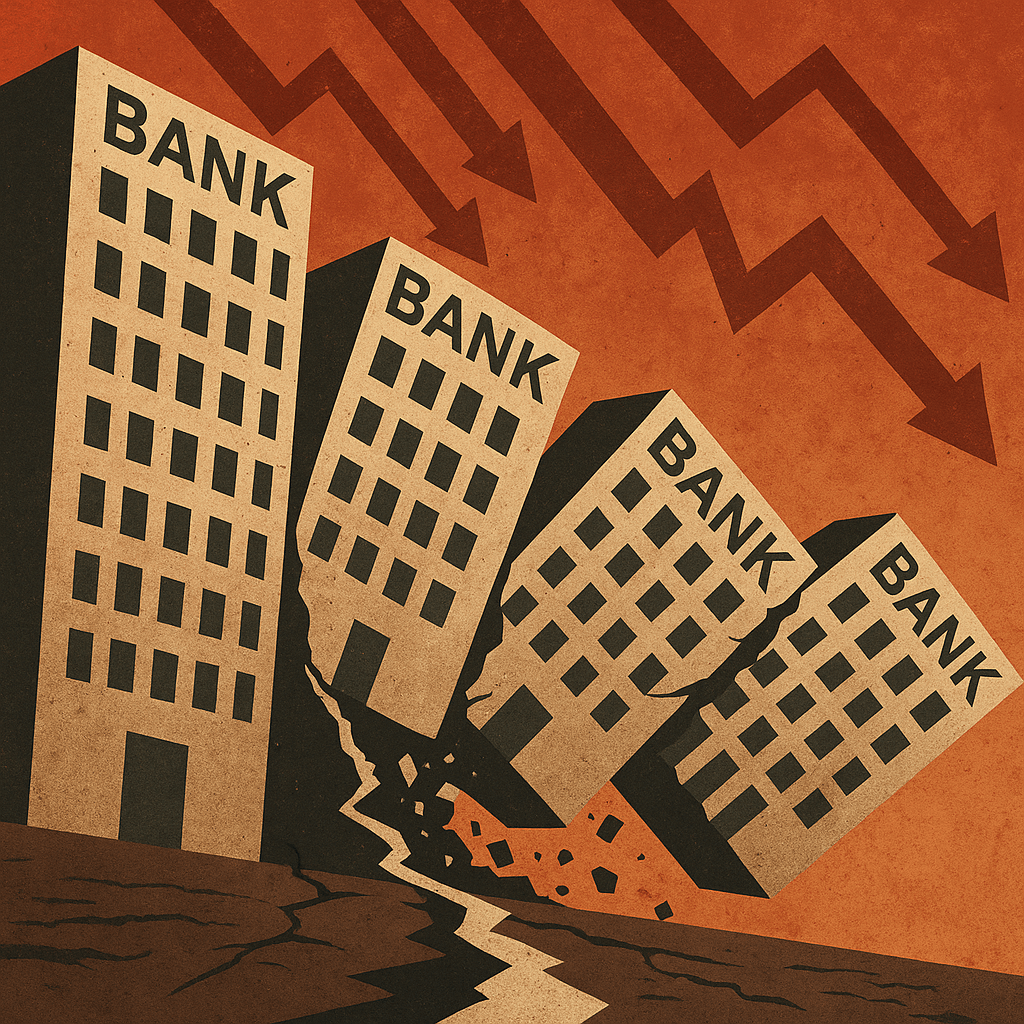The 2007 Credit Crunch: How a US Crisis Brought Britain to Its Knees

On a grey Monday morning in September 2008, I boarded the DLR as usual, heading into work. As we approached Canary Wharf station, something felt different. Outside the Lehman Brothers headquarters, camera crews had already gathered. Reporters were live on air, and sharply dressed employees were trickling out of the building — some with boxes, some just looking stunned. Lehman Brothers had filed for bankruptcy. At that moment, the global financial crisis — which had been brewing for over a year — hit home. The heart of London’s financial district had become ground zero.
The UK would soon learn that this wasn’t just an American story. Though the crisis began in the US housing market, it exposed deep flaws in the British banking system and sparked a chain of events that reshaped the UK economy, politics, and public trust in finance. We called it the credit crunch — a sudden, violent freezing of the financial system that brought the global economy to a standstill.
What Sparked the Credit Crunch?
The credit crunch was triggered by the collapse of the subprime mortgage market in the United States. American lenders had issued high-risk mortgages to borrowers with poor credit histories. These mortgages were bundled into complex financial products and sold to investors around the world — including many in the UK.
As defaults rose and house prices fell, the value of these financial instruments plummeted. Banks, unsure of who held the toxic assets, stopped lending to each other. Confidence evaporated, credit markets seized up, and a full-blown banking crisis followed.
Why the UK Was So Vulnerable
Several factors made the UK especially exposed:
- Heavy Reliance on Interbank Lending: British banks like Northern Rock were particularly reliant on borrowing from other banks to fund their operations. When that credit dried up, they had no fallback.
- Exposure to Toxic Assets: UK financial institutions had heavily invested in US mortgage-backed securities, believing them to be safe.
- "Light-Touch" Regulation: The Financial Services Authority (FSA) had allowed a culture of minimal oversight to flourish, missing the warning signs.
The Northern Rock Panic
The first British victim was Northern Rock. In September 2007 — a full year before Lehman collapsed — it became the first UK bank in over 150 years to experience a bank run. As news of its request for emergency funding from the Bank of England leaked, savers lined up outside branches across the country, desperate to withdraw their money.
The government was forced to step in and nationalise the bank in early 2008, but by then the damage to public confidence was done.
The Domino Effect: Recession and Bailouts
As the crisis intensified globally, the UK suffered deep economic and financial damage:
- Major Bank Bailouts: The government injected billions into RBS, Lloyds, and other major institutions. RBS alone received over £45 billion — the largest bailout in UK history.
- Recession: The UK officially entered recession in 2008. GDP shrank, investment stalled, and public finances deteriorated.
- Unemployment and Austerity: Job losses followed in finance and beyond. The political response — especially after 2010 — included years of austerity policies.
- Housing Market Slump: UK property prices, which had soared in the early 2000s, dropped sharply, particularly in areas like London and the South East.
The Legacy: Regulation and Reform
In the years that followed, sweeping reforms were introduced to prevent a repeat of the crisis:
- Banking Regulation Overhaul: The FSA was dismantled in 2013. Regulation was split between the Prudential Regulation Authority (PRA) and the Financial Conduct Authority (FCA).
- Ring-Fencing Retail Banking: New rules required banks to separate their retail operations from riskier investment activities.
- Stronger Capital Buffers: UK banks now face tougher capital requirements to ensure they can absorb losses in future crises.
Conclusion
That morning on the DLR, as I passed the cameras and confusion outside Lehman Brothers’ London HQ, I witnessed a symbolic moment in UK financial history — the exact point when a US-born crisis landed in the heart of Britain’s financial sector.
The credit crunch fundamentally changed the UK: its economy, its politics, its relationship with finance. It taught hard lessons about risk, regulation, and the illusion of endless growth. More than a decade later, those lessons still shape how we think about money, markets, and the fragility of modern finance.